Template DOCX
advertisement
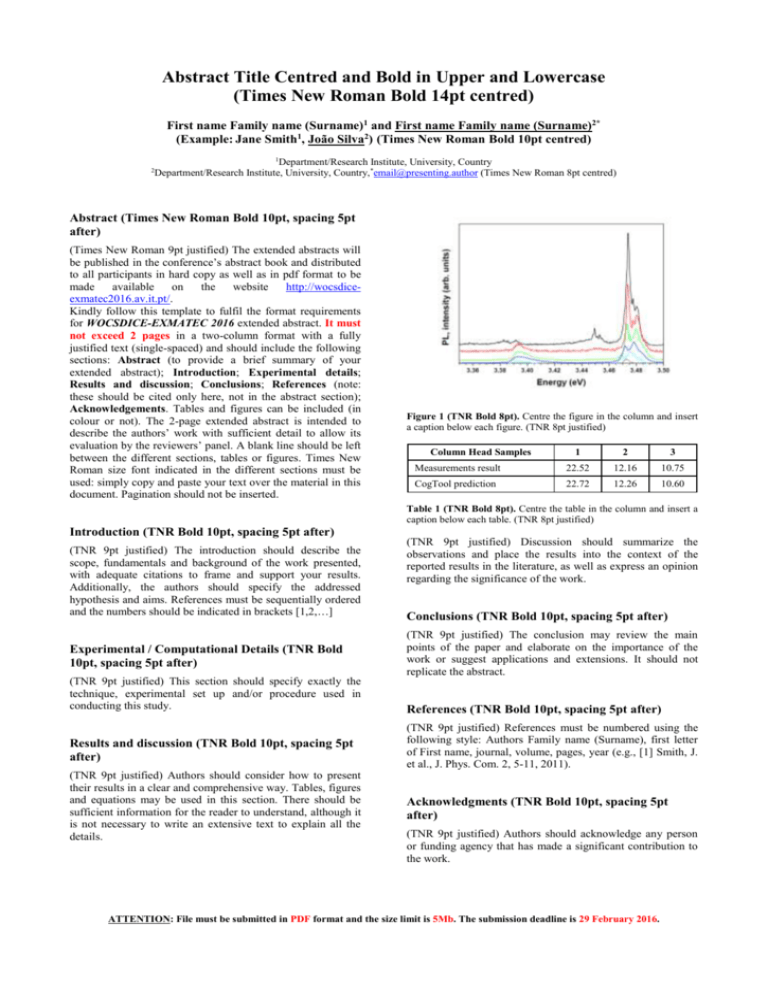
Abstract Title Centred and Bold in Upper and Lowercase (Times New Roman Bold 14pt centred) First name Family name (Surname)1 and First name Family name (Surname)2* (Example: Jane Smith1, João Silva2) (Times New Roman Bold 10pt centred) 1 Department/Research Institute, University, Country Department/Research Institute, University, Country,*email@presenting.author (Times New Roman 8pt centred) 2 Abstract (Times New Roman Bold 10pt, spacing 5pt after) (Times New Roman 9pt justified) The extended abstracts will be published in the conference’s abstract book and distributed to all participants in hard copy as well as in pdf format to be made available on the website http://wocsdiceexmatec2016.av.it.pt/. Kindly follow this template to fulfil the format requirements for WOCSDICE-EXMATEC 2016 extended abstract. It must not exceed 2 pages in a two-column format with a fully justified text (single-spaced) and should include the following sections: Abstract (to provide a brief summary of your extended abstract); Introduction; Experimental details; Results and discussion; Conclusions; References (note: these should be cited only here, not in the abstract section); Acknowledgements. Tables and figures can be included (in colour or not). The 2-page extended abstract is intended to describe the authors’ work with sufficient detail to allow its evaluation by the reviewers’ panel. A blank line should be left between the different sections, tables or figures. Times New Roman size font indicated in the different sections must be used: simply copy and paste your text over the material in this document. Pagination should not be inserted. Figure 1 (TNR Bold 8pt). Centre the figure in the column and insert a caption below each figure. (TNR 8pt justified) 1 2 3 Measurements result Column Head Samples 22.52 12.16 10.75 CogTool prediction 22.72 12.26 10.60 Table 1 (TNR Bold 8pt). Centre the table in the column and insert a caption below each table. (TNR 8pt justified) Introduction (TNR Bold 10pt, spacing 5pt after) (TNR 9pt justified) The introduction should describe the scope, fundamentals and background of the work presented, with adequate citations to frame and support your results. Additionally, the authors should specify the addressed hypothesis and aims. References must be sequentially ordered and the numbers should be indicated in brackets [1,2,…] Experimental / Computational Details (TNR Bold 10pt, spacing 5pt after) (TNR 9pt justified) This section should specify exactly the technique, experimental set up and/or procedure used in conducting this study. (TNR 9pt justified) Discussion should summarize the observations and place the results into the context of the reported results in the literature, as well as express an opinion regarding the significance of the work. Conclusions (TNR Bold 10pt, spacing 5pt after) (TNR 9pt justified) The conclusion may review the main points of the paper and elaborate on the importance of the work or suggest applications and extensions. It should not replicate the abstract. References (TNR Bold 10pt, spacing 5pt after) Results and discussion (TNR Bold 10pt, spacing 5pt after) (TNR 9pt justified) References must be numbered using the following style: Authors Family name (Surname), first letter of First name, journal, volume, pages, year (e.g., [1] Smith, J. et al., J. Phys. Com. 2, 5-11, 2011). (TNR 9pt justified) Authors should consider how to present their results in a clear and comprehensive way. Tables, figures and equations may be used in this section. There should be sufficient information for the reader to understand, although it is not necessary to write an extensive text to explain all the details. Acknowledgments (TNR Bold 10pt, spacing 5pt after) (TNR 9pt justified) Authors should acknowledge any person or funding agency that has made a significant contribution to the work. ATTENTION: File must be submitted in PDF format and the size limit is 5Mb. The submission deadline is 29 February 2016.
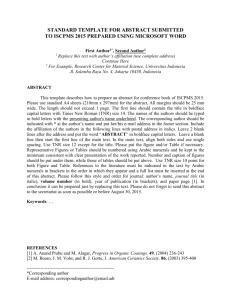
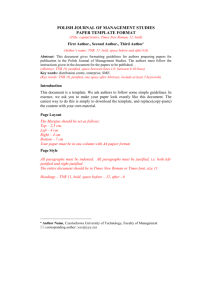
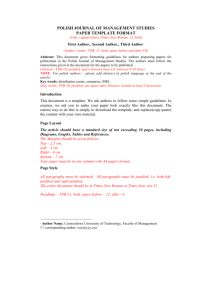
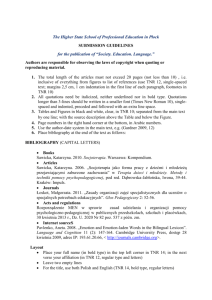

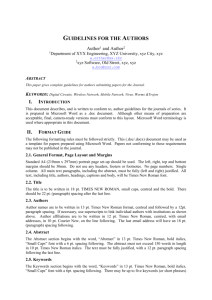
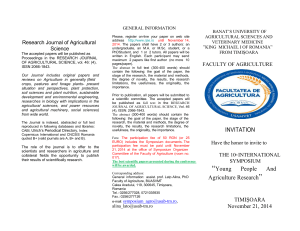
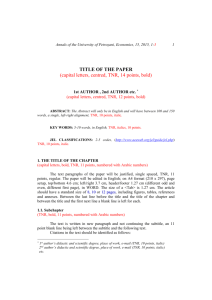
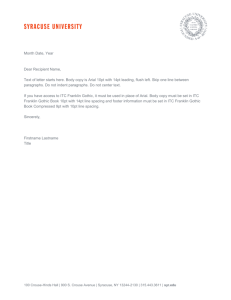
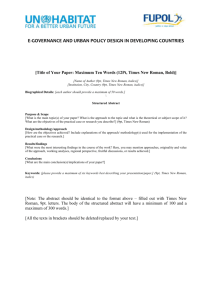
![[Original Paper]](http://s3.studylib.net/store/data/006858232_2-ac08fe56832330847bdefc78f867e12b-300x300.png)
